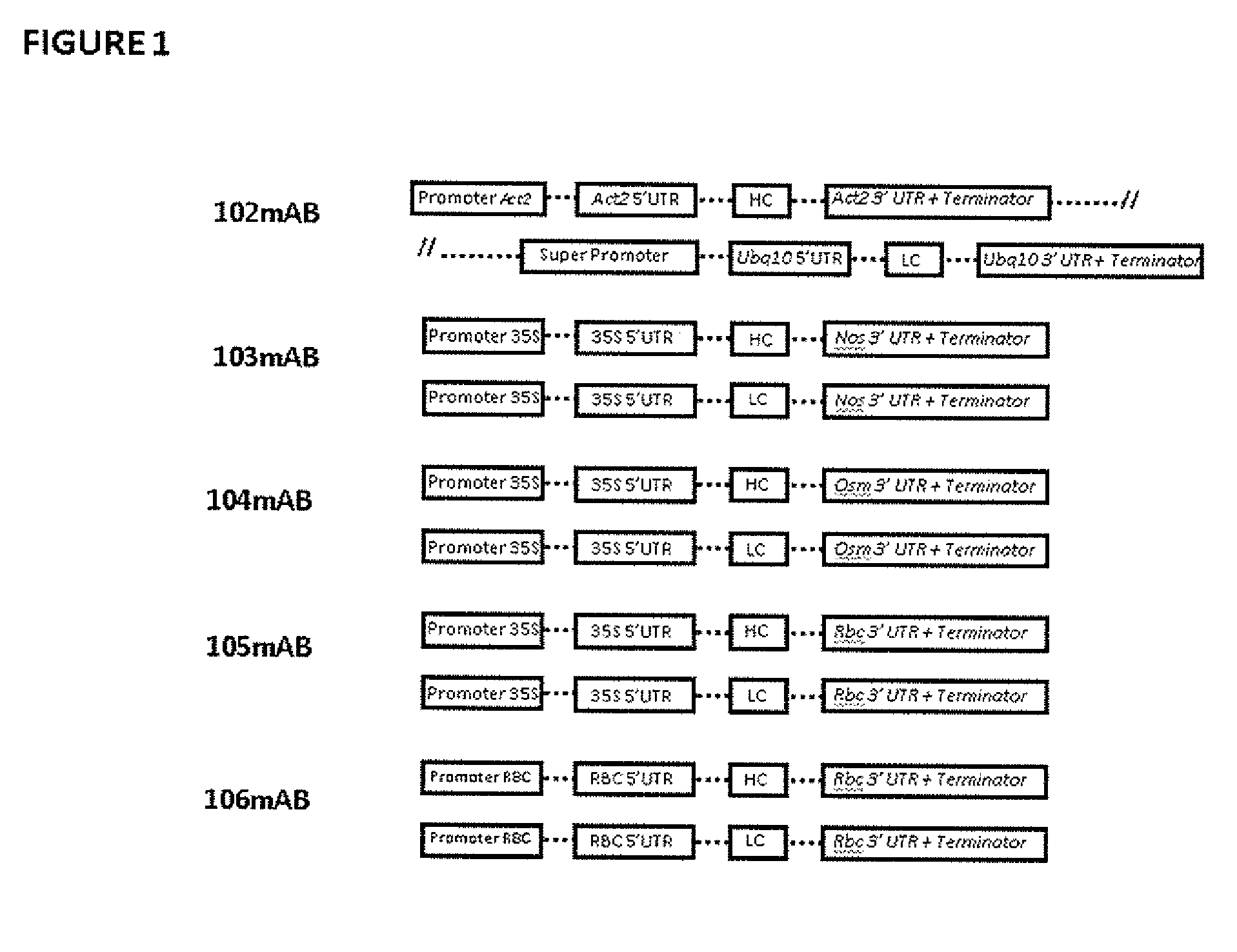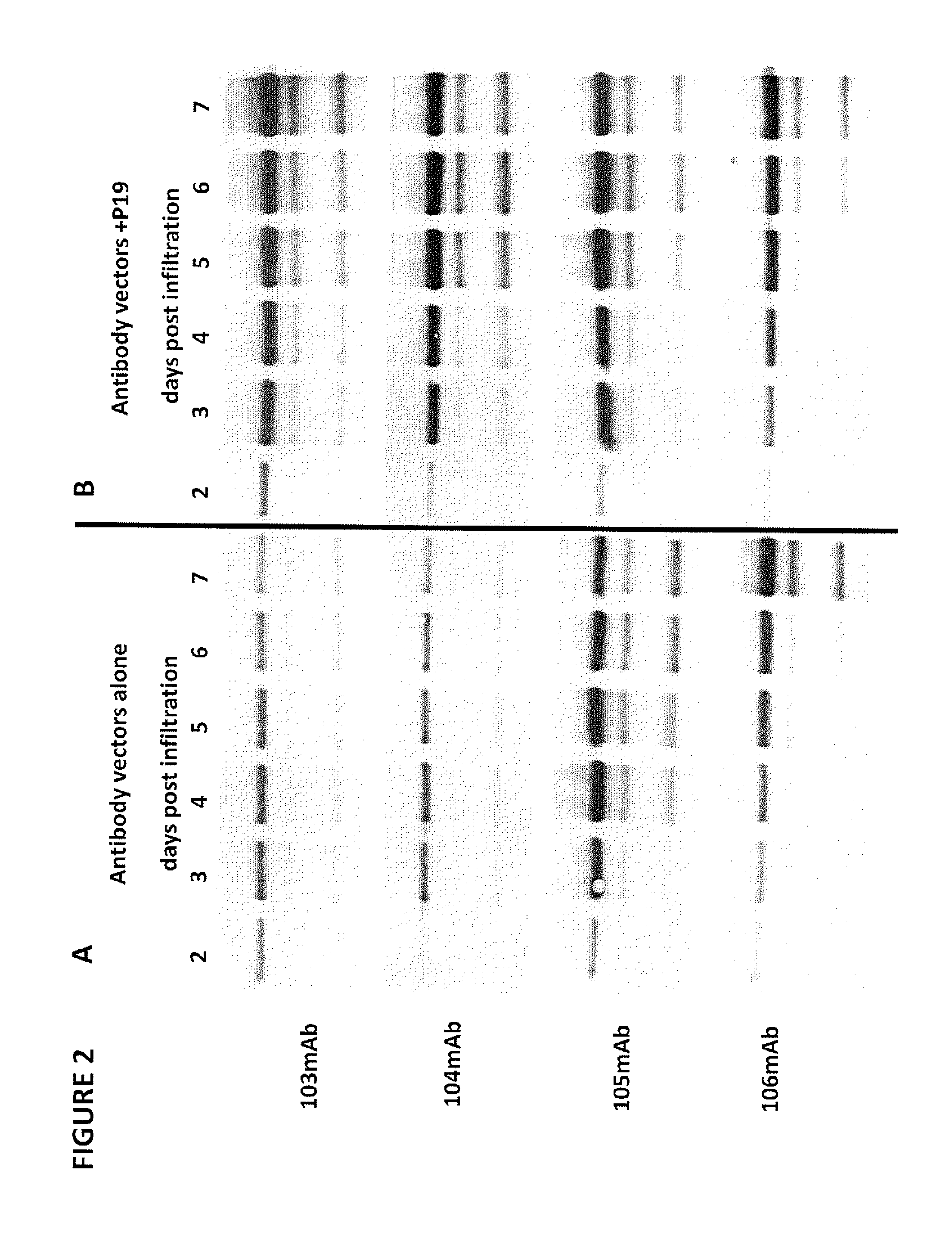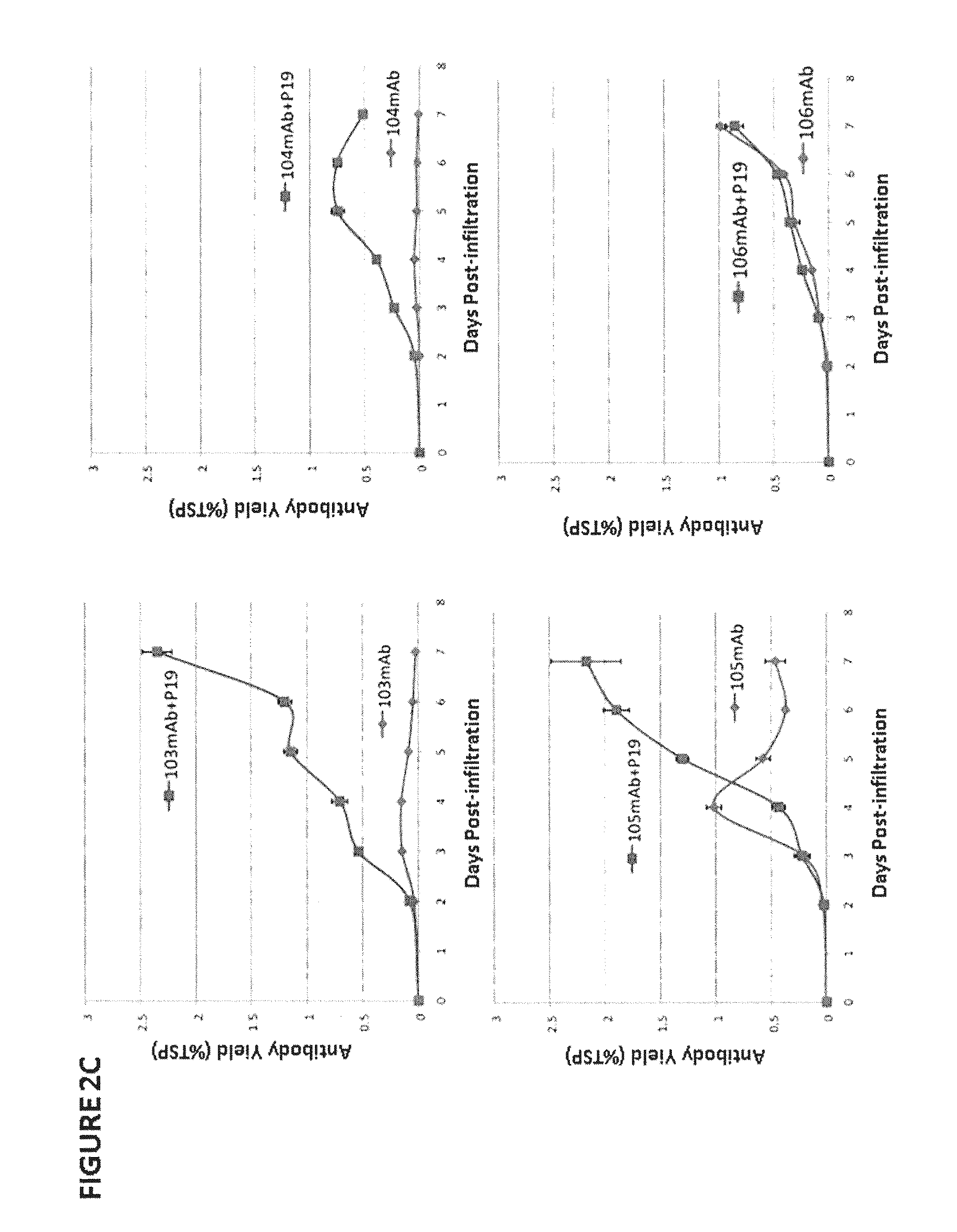Vectors and Methods For Enhancing Recombinant Protein Expression in Plants
a technology of recombinant protein and enhancing recombinant protein, which is applied in the field of enhancing recombinant protein expression in plants, can solve the problems of limited use of p19, unable to generate hr, and transgenic expression of p19, etc., and achieves the effect of driving high levels of heterologous protein expression and enhancing the expression of recombinant protein
- Summary
- Abstract
- Description
- Claims
- Application Information
AI Technical Summary
Benefits of technology
Problems solved by technology
Method used
Image
Examples
example 1
Experimental Procedures
Plant Expression Vectors
[0095]Four expression cassettes, namely 103-106, were synthesized and cloned into the T-DNA region of pICH14011, creating plasmids p103-p106 for producing recombinant proteins in Nicotiana species. The structures of the expression cassettes are depicted in FIG. 1. Expression cassettes 103-105 contain the 35S promoter and 5′UTR of the Cauliflower Mosaic Virus (CaMV; Genbank accession: AF140604), while 106 contains the promoter and 5′ UTR of ribulose bisphosphate carboxylase (rbc) small subunit gene from Chrysanthemum morifolium (Genbank accession: AY163904.1). Cassette 103 contains the 3′ UTR and terminator sequences from the nopaline synthase (nos) gene of Agrobacterium (Genbank accession: V00087.1), cassette 104 contains the 3′ UTR and terminator sequences from the osmotin (osm) gene of Oryza sativa (Genbank accession: L76377.1), and cassettes 105 and 106 carry the 3′ UTR and terminator sequences from the rbc gene of C. morifolium (Gen...
PUM
| Property | Measurement | Unit |
|---|---|---|
| Electrical conductance | aaaaa | aaaaa |
| Therapeutic | aaaaa | aaaaa |
| Nucleic acid sequence | aaaaa | aaaaa |
Abstract
Description
Claims
Application Information
 Login to View More
Login to View More - R&D
- Intellectual Property
- Life Sciences
- Materials
- Tech Scout
- Unparalleled Data Quality
- Higher Quality Content
- 60% Fewer Hallucinations
Browse by: Latest US Patents, China's latest patents, Technical Efficacy Thesaurus, Application Domain, Technology Topic, Popular Technical Reports.
© 2025 PatSnap. All rights reserved.Legal|Privacy policy|Modern Slavery Act Transparency Statement|Sitemap|About US| Contact US: help@patsnap.com



